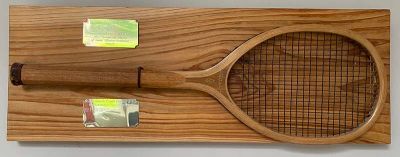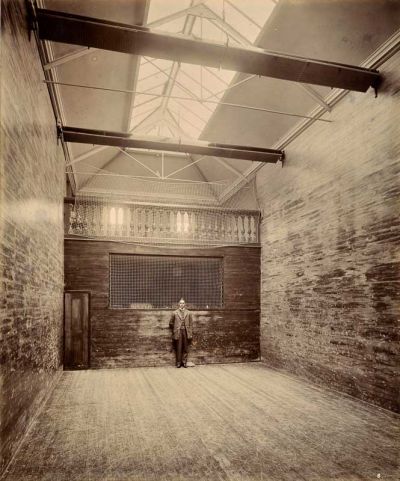
Squash Tennis is one of a handful of sports that were first played in the United States of America. It comes out of the game of rackets and squash.
The game was first played at St Paul’s School in Concord, New Hampshire in the early 1880s. School master James P Conover, who is also credited with introducing Ice Hockey to the USA, had played Rackets while studying at Columbia and at the Montreal Racket Club. In 1883 he had two rackets courts constructed at the school and he ordered rackets and balls to be imported from Arthur Pearson in London but these were detained for several months at the Customs House in New York. Eager to use the new courts the boys started playing with rackets and balls from the new and fashionable game of lawn tennis giving birth to a version of tennis played in a court against a wall. Once the rackets equipment arrived the boys quickly took to the traditional game but also continued with their own variant. The school added four smaller open air squash rackets courts to the building in 1884 and these proved more suited to the squash tennis game.
The St Paul’s courts were the first squash courts to be built in North America and followed the dimensions of those at Harrow School in England. Conover felt that squash rackets was a safer option for the boys to play having a softer ball which led to fewer injuries than with rackets. He may well have encouraged the playing of squash tennis along with other innovations within these racket sports, the school is also responsible for the differences in American hardball squash and the international soft ball version. The soft rubber squash ball did not fare well in the freezing winter temperatures of these courts remaining slow and sluggish which led to the development of the harder American squash ball and consequently the more suitable narrower (18.5 ft) courts that were a feature of American squash until the end of the 20th Century when the international standard softer ball and wider court (21ft) became more widely adopted.
The fast rallies and lively action of squash tennis meant that it remained popular with the boys at school and they took it with them when they moved on. The Boston Athletic Association’s new clubhouse built in 1888 featured a Rugby Fives court that soon became the home for their game of choice, squash tennis.
Very soon new courts were being built on private estates and country clubs across New England and wider afield. Specialist squash tennis rackets that were lighter and shorter than their lawn tennis counterparts were developed and a fast inflated webbed ball was adopted that zipped around the growing number of courts.

At this time our wealthy American founder Charles Tuller Garland built the Moreton Morrell tennis court and along with it our squash tennis court, the only one that we know of in ‘old’ England.
In 1911 the (US) National Squash Tennis Association was founded, a standard court size was adopted (17ft x 32.5ft) and an inter-club league started the following year. Squash tennis was more popular in America at this time than squash racquets because of the pace and action that it provided.
The games peak popularity came in between the wars as players drove for more speed and adopted a more highly pressurised ball. But this in turn made it difficult for new players to learn and compete with experienced players discouraging many from taking up the sport. The second world war also brought rubber shortages which brought an end to the webbed ball and the game all but died out. At the same time squash racquets flourished.
After the war the game returned to its roots and adopted the lawn tennis ball which made it easier to play but disenchanted the old players that remembered the faster game. Attempts were made to revive the game throughout the 50s and 60s and new balls created but with increasing competition from the new sport of racquetball squash tennis dwindled. Occasionally players in some of the older American clubs will play the game on the slightly wider American squash courts where they remain or even on the wider still international courts but the preference is for the narrower courts that are now limited in number. The last US National Championship was contested in 1995 and the NSTA no longer meets meaning the game is now virtually extinct.
There is a purpose-built squash tennis court still in playable condition in America at Plum Orchard that was restored in 2008. Originally built in 1903/4 the court is part of George Lauder Carnegie’s estate on Cumberland Island Georgia, now part of the National Park Service.
The court at Moreton Morrell remains open for play which we think makes it the last court in the world. We play with short-handled modern lawn tennis rackets and lawn tennis balls.


